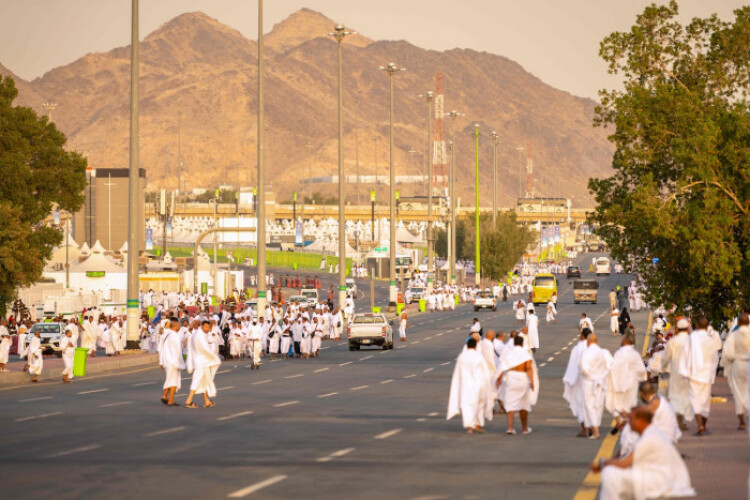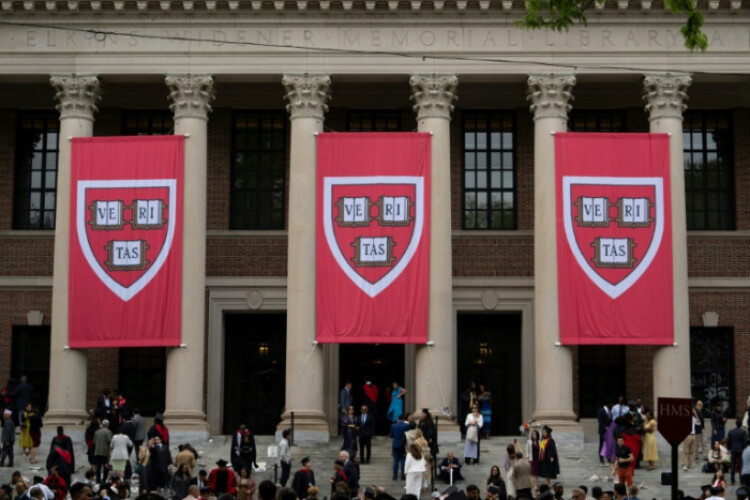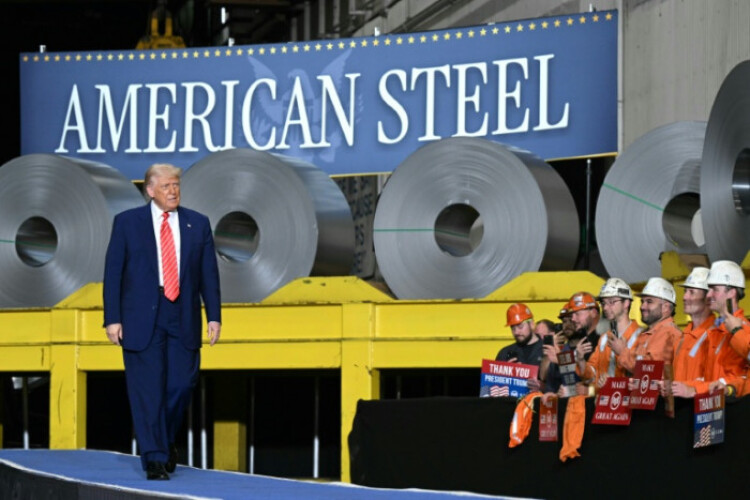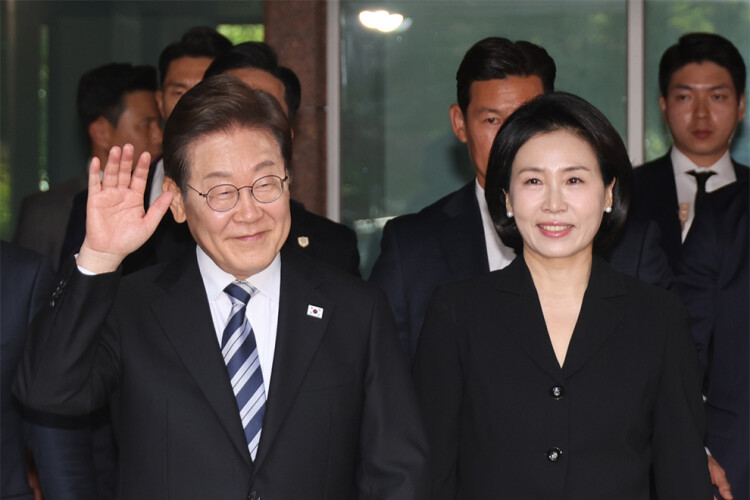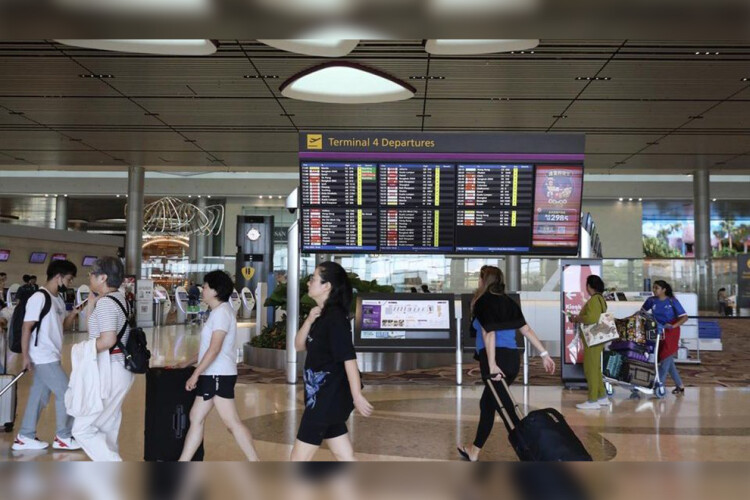
NEW DELHI – Trade tensions and a decline in consumer confidence amid political and economic uncertainty have dented otherwise strong projected demand for air travel.
While airlines are expected to carry a record 4.99 billion travellers in 2025 – 4 per cent more than in 2024 – the latest forecast is lower than the 5.22 billion projected by the International Air Transport Association (Iata) in December 2024.
Still, airlines are expected to turn in higher profits despite the headwinds.
Iata, a global trade body representing 350 carriers, said on June 2 that airline net profits are projected to be US$36 billion (S$46.4 billion) in 2025, up from US$32.4 billion in 2024 but slightly below the earlier forecast of US$36.6 billion for 2025.
Net profit margins are also expected to rise to 3.7 per cent in 2025, up from 3.4 per cent in 2024.
Iata director-general Willie Walsh said 2025 will be a better year for airlines, even with the significant uncertainties in global markets in the first half of the year.
“Considering the headwinds, it’s a strong result that demonstrates the resilience that airlines have worked hard to fortify,” he added in a statement issued at the association’s annual general meeting in New Delhi.
Iata will hold its next annual meeting in 2026 in Rio de Janeiro, Brazil.
The Asia-Pacific is the largest and fastest-growing air travel market in terms of traffic, Iata said, and passenger demand in the region is expected to be strong given the relaxation in visa requirements in several Asian countries such as China, Vietnam, Malaysia and Thailand.
However, the association noted economic challenges as gross domestic product forecasts for the region, especially for China, have been revised downwards.
Mr Walsh said the biggest positive driver of profitability has been the 13 per cent fall in jet fuel prices.
Strong employment and moderating inflation projections are also expected to keep air travel demand growing, even if not as fast as previously projected.
An Iata poll in April found that a large majority of travellers expect to travel as much or more in the next 12 months. While 73 per cent of respondents expect to be personally affected by trade tensions, 65 per cent said this will not change their travel habits.
Of the business travellers polled, 68 per cent expect to travel more to visit customers amid the trade tensions.
GRAPHICS: THE STRAITS TIMES GRAPHICS; SOURCE: INTERNATIONAL AIR TRANSPORT ASSOCIATION
Iata said passenger yields – a measure of how much airlines earn per passenger and a proxy for air fares – will fall 4 per cent in 2025, reflecting lower oil prices and strong competition within the industry.
The average return airfare in 2025 is projected to be US$390, down from the 2024 estimated average of US$399.
This is at current prices, before adjusting for inflation.
GRAPHICS: THE STRAITS TIMES GRAPHICS; SOURCE: INTERNATIONAL AIR TRANSPORT ASSOCIATION
Supply chain issues that have plagued the airline industry since the pandemic are expected to persist in 2025, and could continue until the end of the decade, Iata said.
It pointed to the backlog of aircraft deliveries, which have exceeded 17,000, implying a wait time of 14 years.
Before the pandemic, the backlog was 10,000 to 11,000 planes.
The number of aircraft deliveries scheduled for 2025 is also 26 per cent less than what was promised a year ago, Iata added, noting as well the more than 1,100 aircraft that are under 10 years old but are in storage due to engine problems and shortages of spare parts.
All this has had a negative impact on airlines, driving up aircraft leasing and maintenance costs, and slowing the rate of growth.
Iata also warned that moves to remove aircraft from tariff exemptions could aggravate supply chain constraints and production limits.
The US Department of Commerce in May opened an investigation into whether imported aircraft, jet engines and parts pose a national security threat, which some have said could be used as a basis for new tariffs.
Asked at a press conference on June 2 whether import duties have impacted the cost of aircraft for airlines, Mr Walsh said Iata has not seen evidence of the levies leading to price increases at this point.
“Obviously, any development to increase the price of aircraft is going to be very much an unwelcome development, and will be resisted by airlines, because we will have to understand the justification behind any increase,” he said.
“We don’t want to see… any of the suppliers using tariffs as an excuse or an opportunity to increase their prices to the industry,” he added.
Trade tensions are also expected to crimp air cargo volumes, with Iata projecting a 0.7 per cent growth rate in 2025, compared with 11.3 per cent growth in 2024.
Despite the near-term challenges, plane maker Airbus is standing by its demand projections for the Asia-Pacific, its regional head told The Straits Times.
The European company had said in 2024 that it expects Asia-Pacific airlines to require 19,500 new planes by 2043.
Speaking to ST on the sidelines of Iata’s annual general meeting, Airbus Asia-Pacific president Anand Stanley said core economic growth in the region remains robust.
There is high potential thanks to the Asia-Pacific region’s youthful demographics and the large proportion of the population who are not flying but could be in the future.
While he acknowledged that supply chain issues persist, Mr Stanley said Airbus has been mostly successful at mitigating them.
Airbus said in February that it aims to deliver around 820 commercial aircraft in 2025 – 7 per cent more than it delivered in 2024.
Mr Stanley said the company is on track to meet this delivery plan so far, and it is working with its suppliers and airline customers to accomplish it.
On the impact of tariffs, he said this is a “moving scenario” and any conclusions made regarding it would be speculative.
In a speech to round out the second day of the three-day Iata meeting, Indian Prime Minister Narendra Modi said the country is becoming an integral part of the global aviation supply chain.
He said India’s aviation sector is expanding rapidly, noting that the country is now the world’s third-largest domestic aviation market and offers an excellent investment opportunity for the world’s leading aviation companies.
Mr Modi pointed to the heavy investments being made in airport infrastructure and the more than 2,000 aircraft that have been ordered by Indian carriers.
“This is just the beginning,” he added, highlighting moves to make India an attractive destination for aircraft leasing, and accelerating efforts to turn the country into a global hub for aircraft maintenance.
Asia News Network/The Straits Times
While airlines are expected to carry a record 4.99 billion travellers in 2025 – 4 per cent more than in 2024 – the latest forecast is lower than the 5.22 billion projected by the International Air Transport Association (Iata) in December 2024.
Still, airlines are expected to turn in higher profits despite the headwinds.
Iata, a global trade body representing 350 carriers, said on June 2 that airline net profits are projected to be US$36 billion (S$46.4 billion) in 2025, up from US$32.4 billion in 2024 but slightly below the earlier forecast of US$36.6 billion for 2025.
Net profit margins are also expected to rise to 3.7 per cent in 2025, up from 3.4 per cent in 2024.
Iata director-general Willie Walsh said 2025 will be a better year for airlines, even with the significant uncertainties in global markets in the first half of the year.
“Considering the headwinds, it’s a strong result that demonstrates the resilience that airlines have worked hard to fortify,” he added in a statement issued at the association’s annual general meeting in New Delhi.
Iata will hold its next annual meeting in 2026 in Rio de Janeiro, Brazil.
The Asia-Pacific is the largest and fastest-growing air travel market in terms of traffic, Iata said, and passenger demand in the region is expected to be strong given the relaxation in visa requirements in several Asian countries such as China, Vietnam, Malaysia and Thailand.
However, the association noted economic challenges as gross domestic product forecasts for the region, especially for China, have been revised downwards.
Mr Walsh said the biggest positive driver of profitability has been the 13 per cent fall in jet fuel prices.
Strong employment and moderating inflation projections are also expected to keep air travel demand growing, even if not as fast as previously projected.
An Iata poll in April found that a large majority of travellers expect to travel as much or more in the next 12 months. While 73 per cent of respondents expect to be personally affected by trade tensions, 65 per cent said this will not change their travel habits.
Of the business travellers polled, 68 per cent expect to travel more to visit customers amid the trade tensions.
GRAPHICS: THE STRAITS TIMES GRAPHICS; SOURCE: INTERNATIONAL AIR TRANSPORT ASSOCIATION
Iata said passenger yields – a measure of how much airlines earn per passenger and a proxy for air fares – will fall 4 per cent in 2025, reflecting lower oil prices and strong competition within the industry.
The average return airfare in 2025 is projected to be US$390, down from the 2024 estimated average of US$399.
This is at current prices, before adjusting for inflation.
GRAPHICS: THE STRAITS TIMES GRAPHICS; SOURCE: INTERNATIONAL AIR TRANSPORT ASSOCIATION
Supply chain issues that have plagued the airline industry since the pandemic are expected to persist in 2025, and could continue until the end of the decade, Iata said.
It pointed to the backlog of aircraft deliveries, which have exceeded 17,000, implying a wait time of 14 years.
Before the pandemic, the backlog was 10,000 to 11,000 planes.
The number of aircraft deliveries scheduled for 2025 is also 26 per cent less than what was promised a year ago, Iata added, noting as well the more than 1,100 aircraft that are under 10 years old but are in storage due to engine problems and shortages of spare parts.
All this has had a negative impact on airlines, driving up aircraft leasing and maintenance costs, and slowing the rate of growth.
Iata also warned that moves to remove aircraft from tariff exemptions could aggravate supply chain constraints and production limits.
The US Department of Commerce in May opened an investigation into whether imported aircraft, jet engines and parts pose a national security threat, which some have said could be used as a basis for new tariffs.
Asked at a press conference on June 2 whether import duties have impacted the cost of aircraft for airlines, Mr Walsh said Iata has not seen evidence of the levies leading to price increases at this point.
“Obviously, any development to increase the price of aircraft is going to be very much an unwelcome development, and will be resisted by airlines, because we will have to understand the justification behind any increase,” he said.
“We don’t want to see… any of the suppliers using tariffs as an excuse or an opportunity to increase their prices to the industry,” he added.
Trade tensions are also expected to crimp air cargo volumes, with Iata projecting a 0.7 per cent growth rate in 2025, compared with 11.3 per cent growth in 2024.
Despite the near-term challenges, plane maker Airbus is standing by its demand projections for the Asia-Pacific, its regional head told The Straits Times.
The European company had said in 2024 that it expects Asia-Pacific airlines to require 19,500 new planes by 2043.
Speaking to ST on the sidelines of Iata’s annual general meeting, Airbus Asia-Pacific president Anand Stanley said core economic growth in the region remains robust.
There is high potential thanks to the Asia-Pacific region’s youthful demographics and the large proportion of the population who are not flying but could be in the future.
While he acknowledged that supply chain issues persist, Mr Stanley said Airbus has been mostly successful at mitigating them.
Airbus said in February that it aims to deliver around 820 commercial aircraft in 2025 – 7 per cent more than it delivered in 2024.
Mr Stanley said the company is on track to meet this delivery plan so far, and it is working with its suppliers and airline customers to accomplish it.
On the impact of tariffs, he said this is a “moving scenario” and any conclusions made regarding it would be speculative.
In a speech to round out the second day of the three-day Iata meeting, Indian Prime Minister Narendra Modi said the country is becoming an integral part of the global aviation supply chain.
He said India’s aviation sector is expanding rapidly, noting that the country is now the world’s third-largest domestic aviation market and offers an excellent investment opportunity for the world’s leading aviation companies.
Mr Modi pointed to the heavy investments being made in airport infrastructure and the more than 2,000 aircraft that have been ordered by Indian carriers.
“This is just the beginning,” he added, highlighting moves to make India an attractive destination for aircraft leasing, and accelerating efforts to turn the country into a global hub for aircraft maintenance.
Asia News Network/The Straits Times

